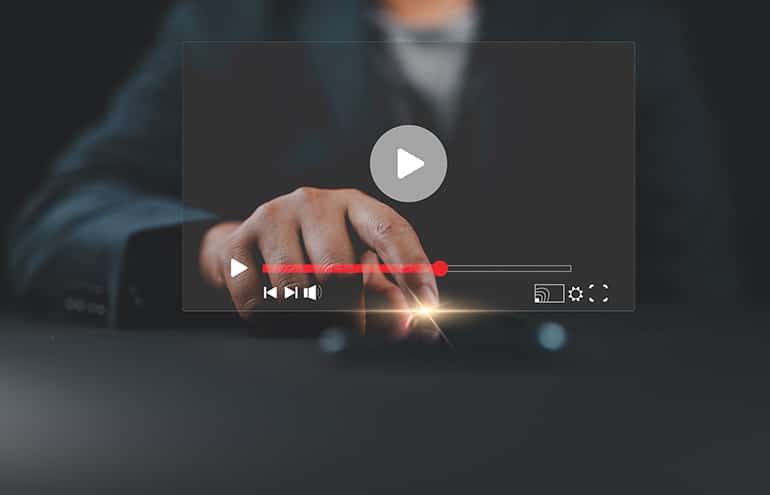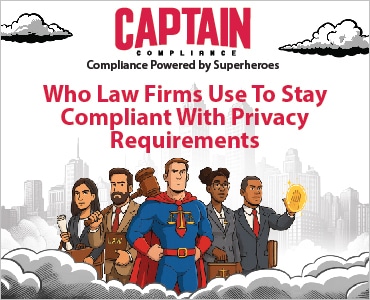The camera is not the enemy; it’s a tool for connection. Kerry Barrett shares tips for building your video presence — and converting viewers into clients.

Table of contents
- Video Presence Is Your New First Impression
- Mastering Platform-Specific Video Marketing Content
- Creating Sustainable Video Content Strategies
- The ‘Brief’ Approach to Creating Video Content
- Planning the Content Calendar
- Developing Camera Confidence
- Ethics Considerations for Attorney Video Marketing
- Measuring Your Videos’ Impact Beyond Metrics
- The Human Element in Legal Videos
- Related Reading on Attorney at Work
Your next potential client just left another attorney’s office. Before scheduling a consultation with you, they pull out their phone and search your name. In seconds, they’re making judgments about your expertise, trustworthiness and professional capability based on your digital presence, particularly your video content.
Video Presence Is Your New First Impression
While courtroom presence and speaking engagements have always been essential, the modern attorney’s influence now extends far beyond physical spaces. The digital-first vetting process has transformed how clients choose legal representation. Attorneys who embrace video are building trust, establishing authority, and converting viewers into clients. Meanwhile, those resistant to video are finding themselves at a growing competitive disadvantage. The reality is simple: if you’re not visible, you’re invisible.
What follows is a quick guide to attorney video marketing, with tips for creating content, developing “camera confidence,” and building video presence.
Mastering Platform-Specific Video Marketing Content
Each social media platform has its own unwritten rules and viewer expectations when it comes to video content. You have to adapt your approach to meet your audience where they are.
LinkedIn has become the virtual “courthouse” of professional networking. Here, video content thrives, particularly when it offers substantive legal insights or thought leadership. Attorneys have found success sharing 30- to 90-second video content analyzing recent court decisions or explaining regulatory changes. One employment law specialist gained significant traction by creating weekly “Case Law Updates” that break down recent decisions affecting workplace rights. Another corporate attorney built a strong following by explaining complex merger regulations through simple whiteboard presentations.
Instagram’s multi-format approach offers different opportunities. Stories work well for behind-the-scenes glimpses into law firm life or quick legal tips. Reels, with their 30-second format, are perfect for addressing common legal misconceptions or sharing bite-sized procedural explanations. A successful estate planning attorney uses Reels to explain complex inheritance concepts through simple scenarios, each ending with a clear call to action.
TikTok
TikTok requires the most dramatic adaptation of traditional legal presentation styles. The platform rewards authenticity and creativity, even in professional content. One criminal defense attorney gained a substantial following by creating “day in the life” videos that demystify the legal process, while another uses trending sounds to explain constitutional rights in memorable ways.
YouTube
YouTube stands apart as a platform for comprehensive legal education content. Successful attorneys use it to host longer explanatory videos, client testimonials, and detailed process walk-throughs. A family law practice grew significantly through a series of “Divorce Process Explained” videos, each addressing specific aspects of separation and custody arrangements.
Creating Sustainable Video Content Strategies
The key to consistent video presence is developing systems that fit within your existing practice. For example:
Content Batching: Schedule monthly “power hours” where you record multiple videos in one session. A real estate attorney might record 10 different closing process explanations in a single morning, then release them strategically throughout the month.
Template Development: Establish standard openings, closings and transition phrases for different types of content. This reduces decision fatigue and maintains consistent branding. For example, you might always open LinkedIn videos with “Here’s what you need to know about [topic]” and close with a specific call to action.
Technical Setup: Invest in a simple but professional recording space. This might mean designating a corner of your office with good lighting and a clean background. Many successful legal influencers use nothing more than a ring light, smartphone and lapel microphone. That said, the higher quality video and sound, the easier it is to edit.
Topic Banking: Create a running list of frequently asked client questions, common misconceptions and timely legal issues. One litigator adds video topic ideas to her phone’s notes app after client meetings while the insights are fresh.
The ‘Brief’ Approach to Creating Video Content
Effective legal video content follows a structure remarkably similar to a well-crafted legal brief. Just as in an opening statement, the video should begin with a clear thesis, establish credibility, and give compelling reasons for the viewer’s continued attention.
The body of the video, like the argument section of a brief, should flow logically from point to point. Each transition should feel natural, leading the viewer through your reasoning process. The key is to maintain the same level of precision used in legal writing while adopting a more conversational, relatable tone.
Finally, the video’s closing, like a court conclusion, needs to leave viewers with clear next steps.
Whether explaining a complex legal concept or sharing insights about a practice area, you should end with a strong call to action that provides value to the audience while advancing your professional goals.
Planning the Content Calendar
Aim to align your video content with your practice’s natural rhythms. Tax attorneys might increase content frequency during tax season, while criminal defense attorneys might address seasonal issues like holiday DUI enforcement. This strategic approach ensures your digital presence enhances rather than disrupts your practice, while consistently building authority in your field.
Developing Camera Confidence
The transformation attorneys undergo when they master camera presence is remarkable. Many initially struggle with what I call the “deposition tone” — flat, formal and uninviting. Through coaching, they learn to modulate their voice, varying pace and pitch to emphasize key points while maintaining natural authority.
Similarly, strategic use of movement and gesture can enhance your message on camera. While wild gesticulation can be distracting, keeping movements within a specific “frame of influence” can reinforce your points in a way that appears natural and polished.
The key is understanding that the camera is not the enemy, but rather a tool for connection. Just as you wouldn’t hide behind a desk during a client consultation, you shouldn’t hide your personality on camera.
Finding the sweet spot between professional authority and authentic approachability is essential for building trust and rapport with viewers.
Ethics Considerations for Attorney Video Marketing
The goal is to maintain professional integrity while also creating engaging, valuable content for your audience. Every piece of content must pass through a triple filter:
- Is it accurate?
- Is it compliant with state bar regulations?
- Does it serve the viewer’s best interests?
Develop clear protocols for video content approval, including implementing disclaimer systems, establishing review processes, and creating guidelines for discussing active cases or sensitive matters.
Measuring Your Videos’ Impact Beyond Metrics
The true measure of success in legal video marketing goes beyond view counts and likes. It lies in the quality of client relationships and conversations generated by the content. One corporate attorney tracked how the quality of his consultations improved after he established a regular video presence. Potential clients arrived better informed and more aligned with his approach, having already connected with his expertise and personality through video. This “pre-qualification” effect often leads to higher conversion rates and stronger, more sustainable client relationships.
The Human Element in Legal Videos
Perhaps the most powerful benefit of video is how it can humanize your law practice. Whether in the courtroom or behind a desk, legal professionals often feel pressured to maintain a certain distance. Video allows you to bridge that gap, creating meaningful connections with potential clients before they ever step into your office.
Image © iStockPhoto.com.

Sign up for Attorney at Work’s daily practice tips newsletter here and subscribe to our podcast, Attorney at Work Today.
Related Reading on Attorney at Work
Jurors Think You’re Lying, Here’s How to Build Trust and Authority
Video Marketing for Lawyers: Best Practices for Winning New Clients















